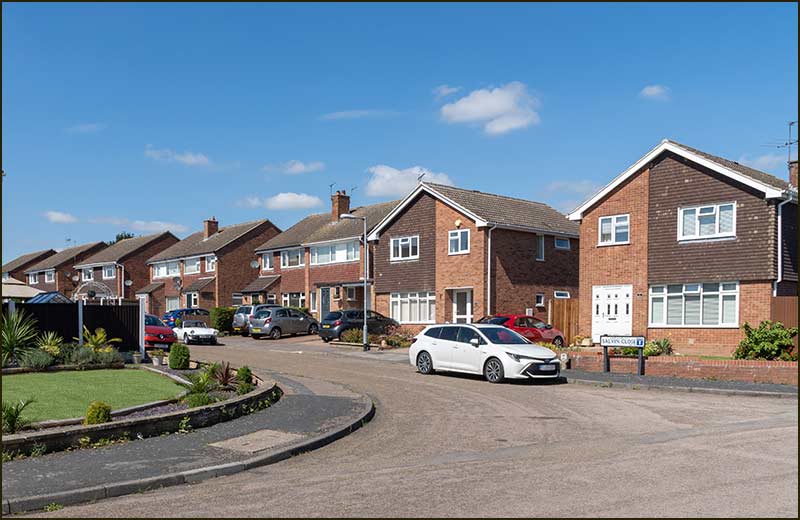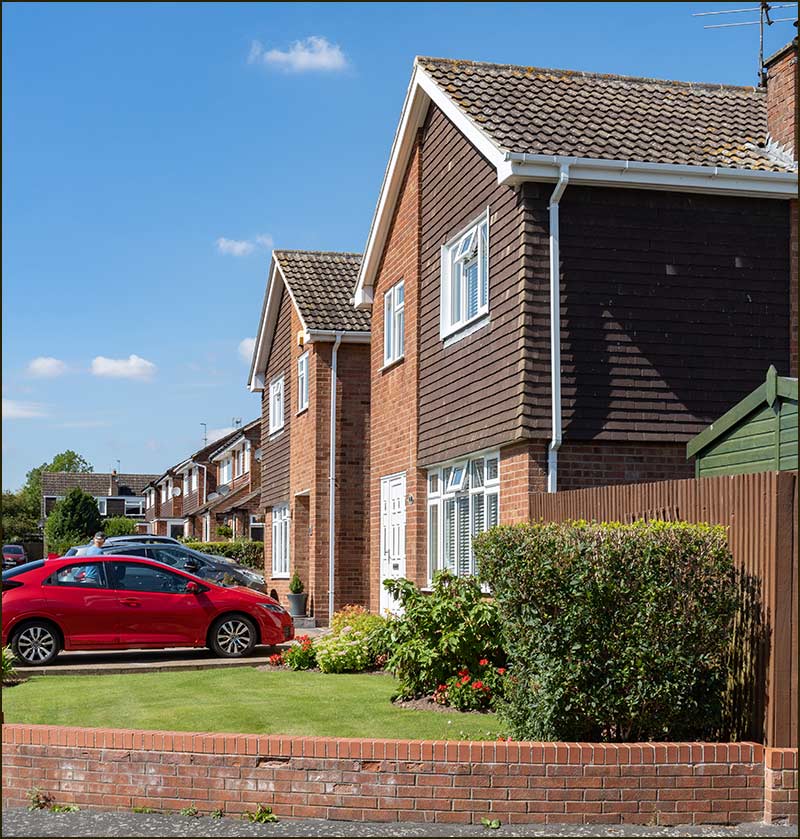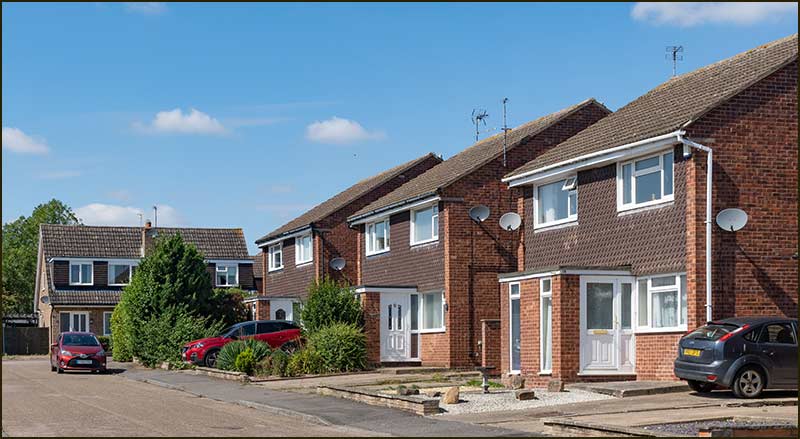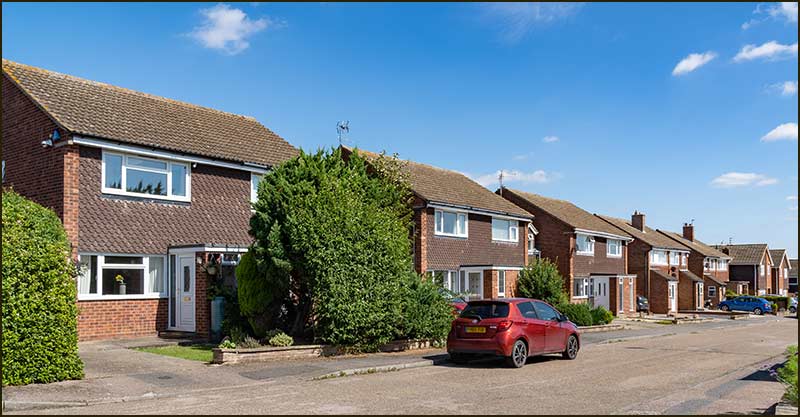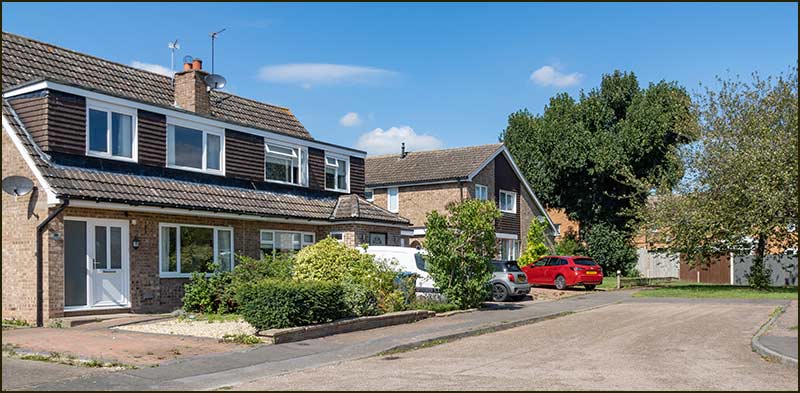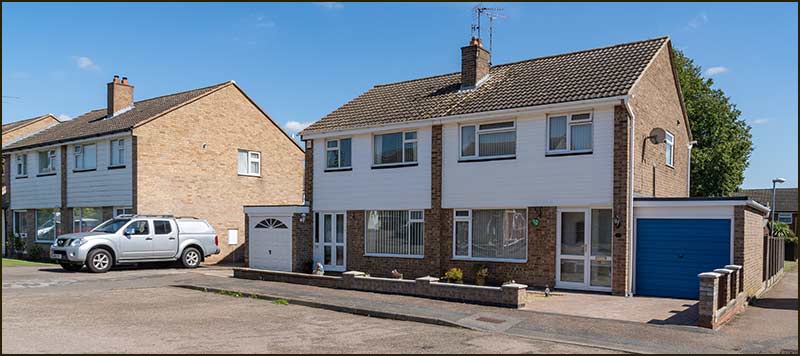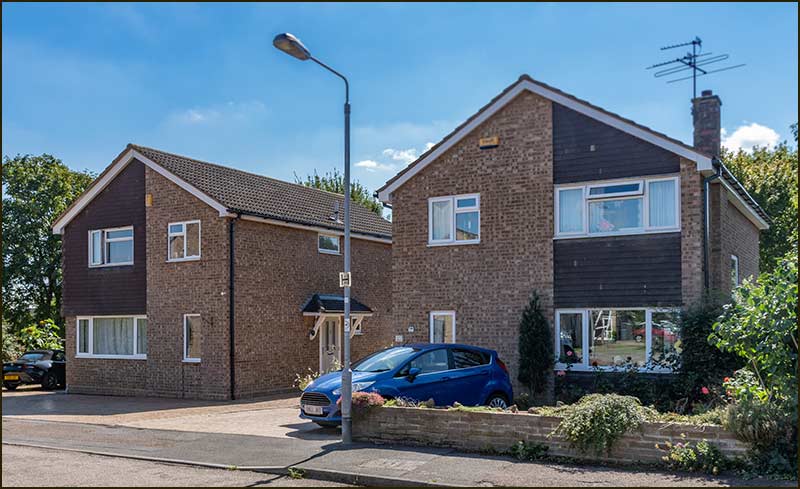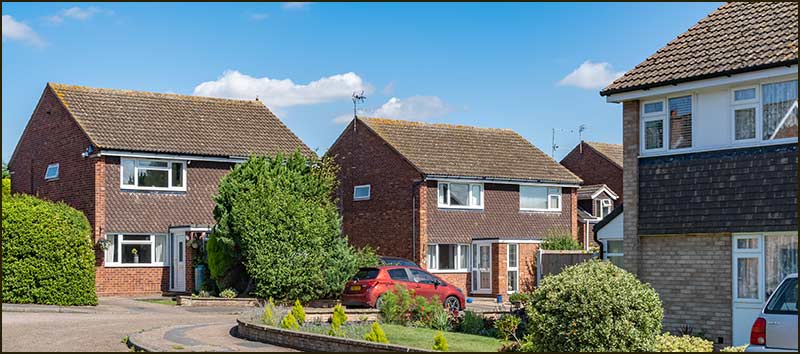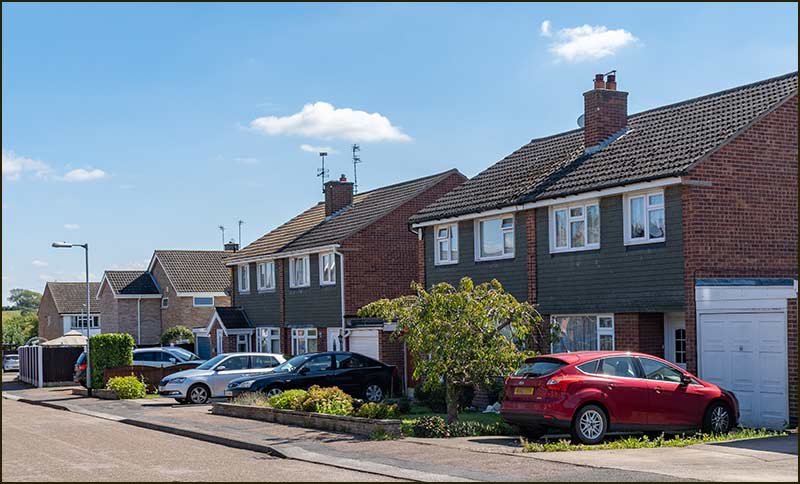Cropwell Bishop Streets: — Salvin Close (28-8-20)

Some people boast that generations of their family can be traced back centuries.
The ability to trace family roots a long way back is quite rare. Ancestors would have had to record their activities on paper but most families did not possess paper and pens – and probably couldn’t read or write anyway.
Most of us have a fascinating family history but we don’t know it because it was never written down.
Being able to trace ancestors is much easier if you follow the male line. Men don’t lose their surname on being married.
Wealth and power can be inherited and having a shared surname helps to prove your claim.
This story is about the Salvin family that lived in Cropwell Bishop.
Salvin Close is named after David Leavis Salvin. He lived in Cropwell Bishop at the end of the 1800s and early 1900s. However, he was not the only Salvin to live in Cropwell Bishop and the story of how the Salvin family came to the village is an interesting one: so is the virtual disappearance of its name.
The Salvin family has a long history – it was written down. That means they were a rich.
We can go back a long way – to 1066.
Joceous le Flamangh came over with William the Conqueror and was rewarded with “one third of a knight’s fee” in Cuckney in north Nottinghamshire. What he had done to deserve this payment and who got the other two thirds is not recorded.
In those days, north Notts would not have been regarded as a lush part of a conquered country. It didn’t even need to be fought for: it became vacant when the previous Saxon owner died without heirs.
So Joceous was no leading-light in William’s government, but he was here and he owned land. Once established he made his influence felt locally.
His sons married into the aristocracy and a grandson became Sheriff of Nottinghamshire and Derbyshire (before Robin Hood’s arrival). His second grandson was named as ‘Ralph of Sylvan’ and became heir to the ‘Manor of Woodhouse’.
Within three generations, the family had marriage links with the Earl of Derby and ownership of property that would eventually become Welbeck Abbey.
The family name mutated into Salvin and extended its links in north Nottinghamshire and even into Yorkshire to an area that exists today as the village of Thorpe Salvin. By the 15th Century, family members had even become part of the aristocracy of County Durham.
The Salvin family had established itself but not become a high-profile one – and this would prove a distinct advantage. Their relative anonymity during some turbulent times, enabled them to keep their heads at a time when many fellow Roman Catholics were losing theirs to the executioner.
By the early 1700s, the Salvins had settled as far south as Gedling and Stoke Bardolph. In 1729 in Stoke Bardolph, Thomas Salvin was born. He married a local girl, Elizabeth Palethorpe at Gedling Church in 1750. They were both 21 at the time.
In later years Thomas would be known as ‘The Farmer of Stoke Bardolph’. A grand title but if you have ever visited Stoke Bardolph (or much more likely, ‘passed through’) the you will be forgiven for wondering if there is enough land for more than one farm.
The young love of Tom and Lizzie brought forth children, the first arriving the following year. They had four children, all boys. Their third son, Joseph, was 28 when he married 23 year old Hannah Sheffield in 1795.
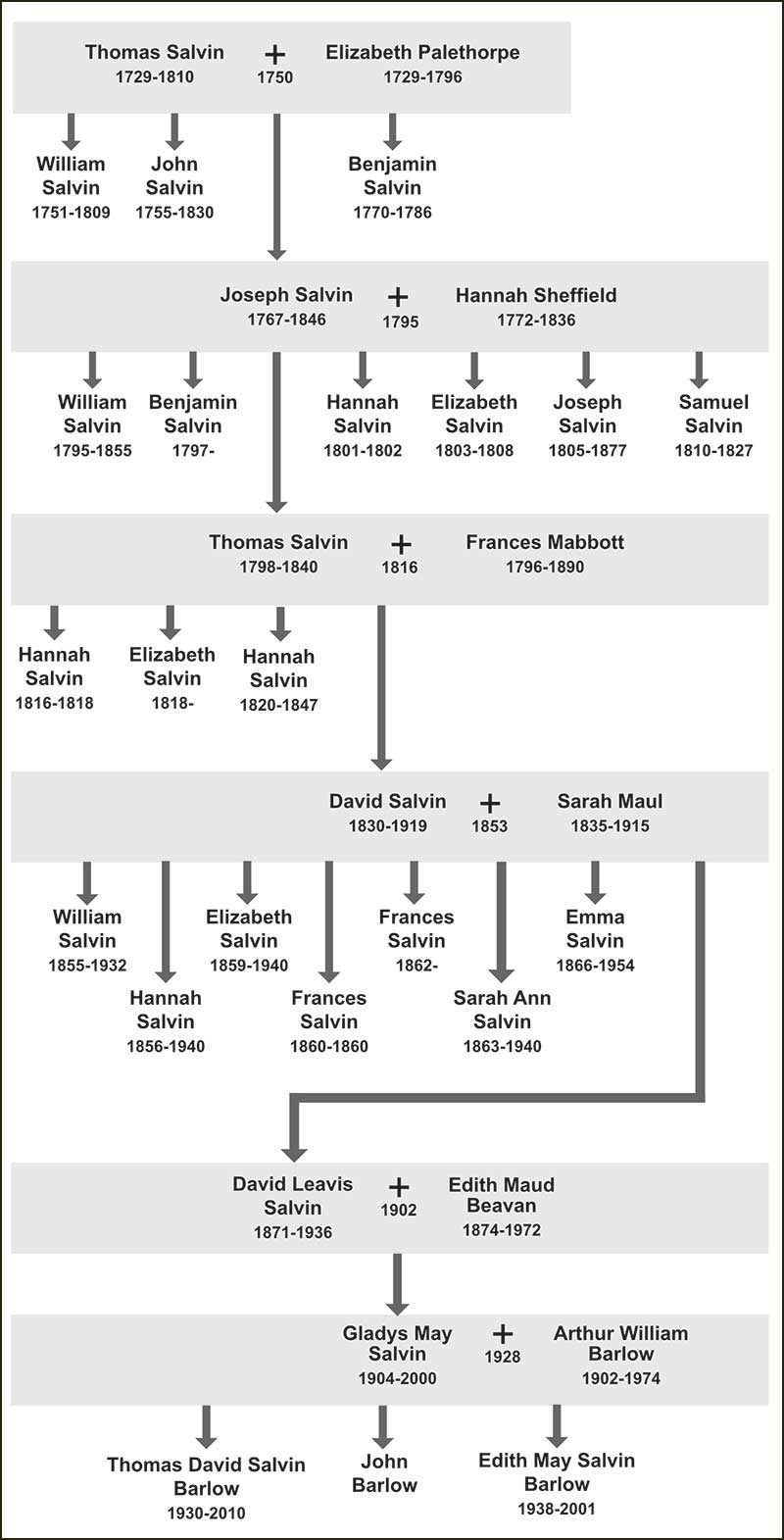
Hannah was born in Castle Donnington but the wedding was at Gedling Church. We know nothing of her parents and can only presume that they moved with her to Gedling or she was working away from home. We don’t know but it doesn’t matter.
Joe and Hannah were in love – and they had 7 children. There were 5 boys and 2 girls.
There was heartache though: Hannah died when 1 year old, Elizabeth when 5 years old and Samuel when 17.
Their 3rd son, Thomas Salvin, is the one of interest to us. He was born in Stoke Bardolph and married Frances Mabbott of Cropwell Bishop in 1816.
Even today, Stoke Bardolph to Cropwell Bishop would be quite a long bicycle ride to discover your true love – and in 1816 there wasn’t a bridge at Gunthorpe, nor were there any bicycles (they were not invented until the following year). However, there was a ferry over the River Trent at Stoke Bardolph.
Once on the other side of the Trent, a brisk walk and you are soon in Shelford. After climbing the hill out of Shelford, it would have been a straight road to Cropwell Butler and then on to Cropwell Bishop.
You could follow the same route today, with a detour over the new A46, but you will need a towel for your swim across the Trent.
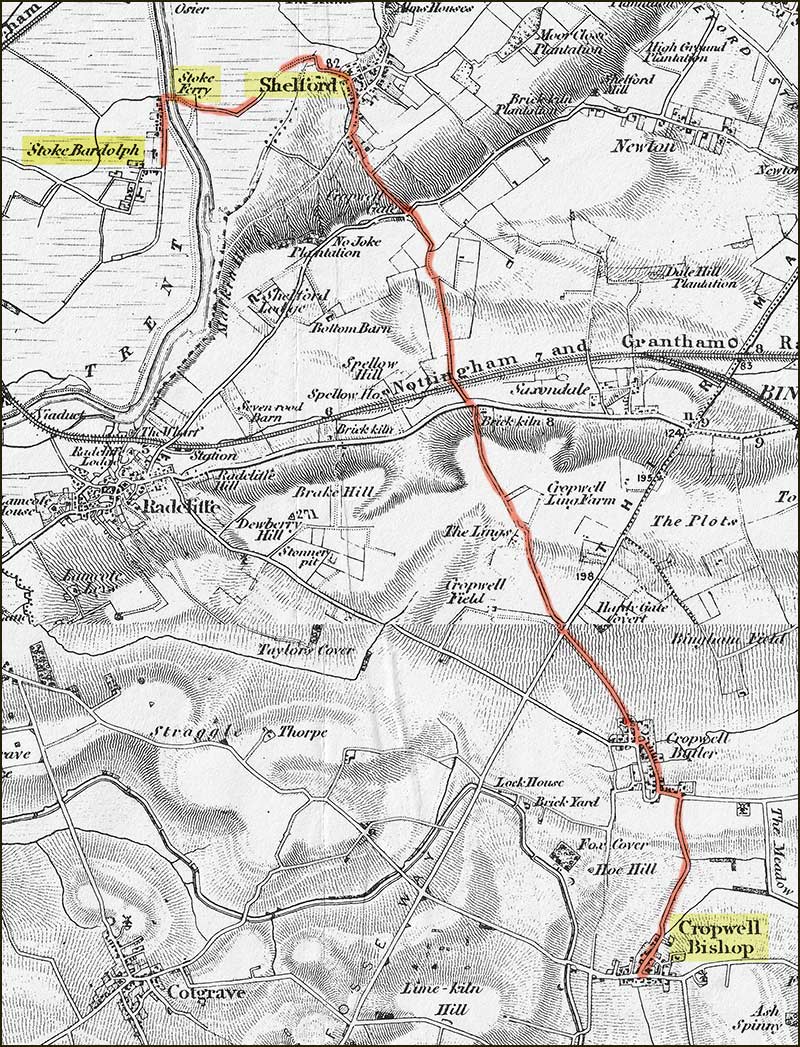
I am not suggesting that Tom and Frances met at a local sing-song in the Wheatsheaf, just that the two villages and its occupants were not so far apart as it first seems.
Tom was 18 years old and Frances was 20 when they married in April 1st 1816 and Cropwell Bishop was where they would live their life.
Their home was a house at The Turn, that is the area in front of St Giles Church where carts could turn around. We can't identify the actual building from historical records.
Three months later, on the 21st July 1816 their first child, Hannah, was born. (Maybe they did meet at a sing-song of sorts at the Wheatsheaf)
Sadly, Hannah died when just 2 years old in 1818, the same year their second girl, Elizabeth, was born.
A third girl was born to them 2 years later and they decided to name her Hannah too. Sadly, this second Hannah also had a short life: she died when just 27 years old.
There was then a 10-year gap before their next child, this time a boy, David Salvin. They had no more children afterwards and in 1840, at the age of 42, Thomas Salvin died.
Frances worked as a housekeeper so she could support 10 year old David.
When David was 23, he married and Frances lived with him and his family until her death at the age of 94.
David started his working life as a bricklayer’s apprentice and became a very proficient builder in Cropwell Bishop. The Old School on Fern Road is an example of his work; so is the ‘cart shed’ at the entrance to Stackyard Close (on the right).
David married Sarah Maul in 1853. Sarah was born and bred in Orston but, on marrying David, moved to Cropwell Bishop.
They had 8 children. The first was William and the last was David Leavis. In between were 6 girls.
Their youngest, David Leavis Salvin, was an ambitious and hard-working man from an early age.
By the time he was 20, in 1891, he had left his home in Cropwell Bishop and was lodging with his sister, Elizabeth, and her husband Thomas Clarke and their family at 191 Sherwood Street in Nottingham. Thomas was a “provisions merchant manager”.
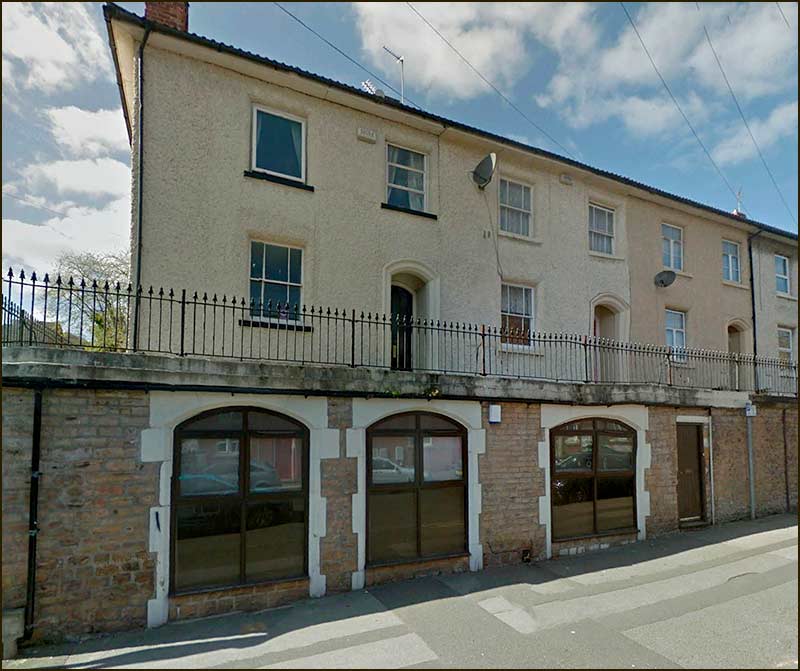
Just 3 years later, in 1894, David Leavis was advertising himself as a grocer at 312 Ilkeston Road. He continued with this shop for at least 10 years.
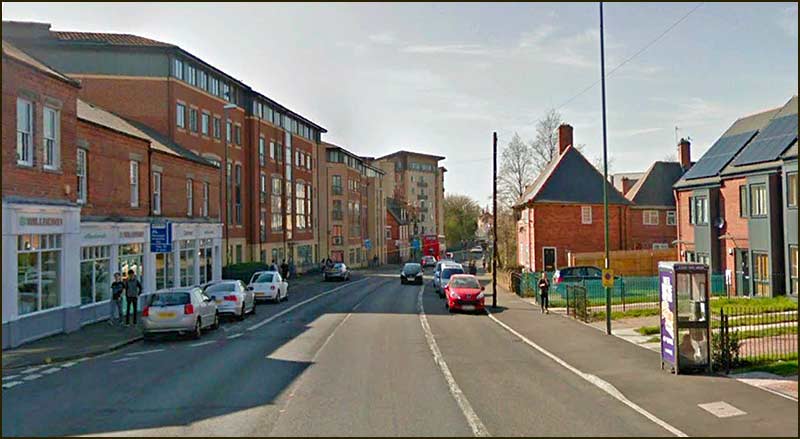
Five years after this, in 1899, he also listed himself as, “beer retailer and shopkeeper”, at 191A Sherwood Street. Look at the photograph of 191 Sherwood Street. It is easy to imagine the ground floor windows as shop fronts, number 191 for groceries and 191A for beer.
This shop appears to have been a short-lived venture because he did not advertise it again.
Life was not all work for David Leavis. In 1902 he married Edith Maud Beavan. In 1904 their daughter, Gladys May Salvin was born: she was to be their only child.
It was at this time that he was advertising his second grocery shop on Ilkeston Road, number 284. Maybe he was in the process of moving to a bigger shop because after this time he no longer advertised the ‘312 shop’ but continued to trade from the ‘284 shop’ until at least 1925.
By that time, he had been a grocer for over 30 years.
David Leavis was an entrepreneur and his business ventures had proved profitable. He was looking to invest his capital beyond his Nottingham shops – into the Cropwell Bishop area of his childhood.
He bought a farm on the north side of Cropwell Butler and also land around Cropwell Bishop. By 1912 he was already referred to in directories as “a principal land owner and farmer” in Cropwell Bishop.
In 1911, he and his family were living at 31 Albert Grove, Nottingham, but maybe he felt that now was the time to look for something better.
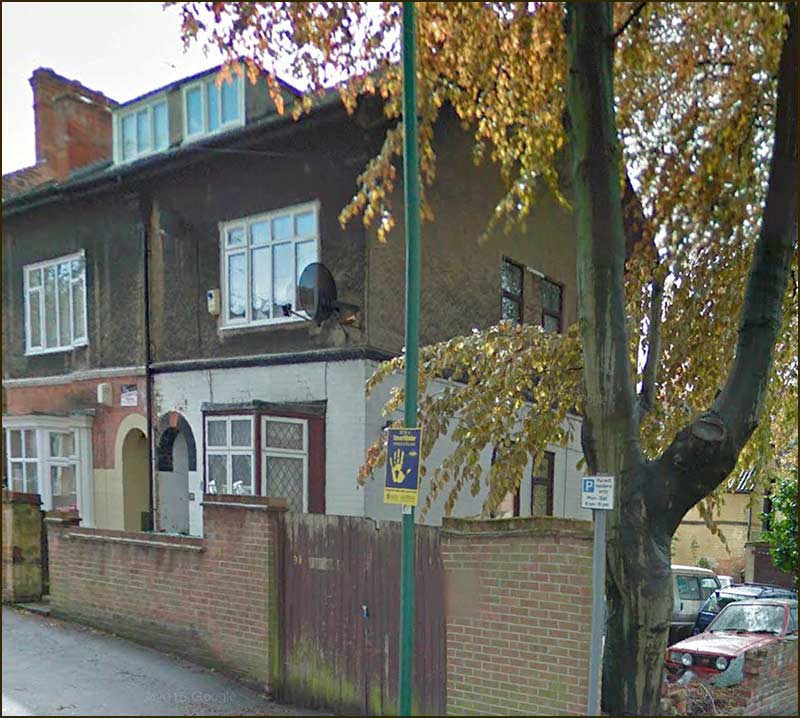
He bought the Manor on Fern Road in Cropwell Bishop and not long after he and his family were living there.

In spite of all his energy, David Leavis Salvin did not enjoy a long life. He died in 1936 at the age of 64.
In the five generations of Salvins we have looked at, the swing from being a family with mainly male children to one of females is interesting. For anyone keen to maintain the family name, it was worrying.
David Leavis and Edith Maud failed to have a son, it meant that the Salvin surname had come to an end in this branch of its family tree.

In times past, the end in line of a family name would have been a great disappointment to some fathers, usually the ones with great wealth to pass on. I don’t think this is the case so much nowadays.
Science has revealed the existence of DNA. We understand how parts of our DNA are passed on to the next generation. Precise parts of it can be identified and they can be screened for: they can even be replaced!
We can identify parents or find long-lost relatives by spitting some saliva into a test tube and posting it for DNA analysis. Within weeks we are sent names of others who have similar DNA.
With all this knowledge, the importance of family names on pieces of paper seems trivial.
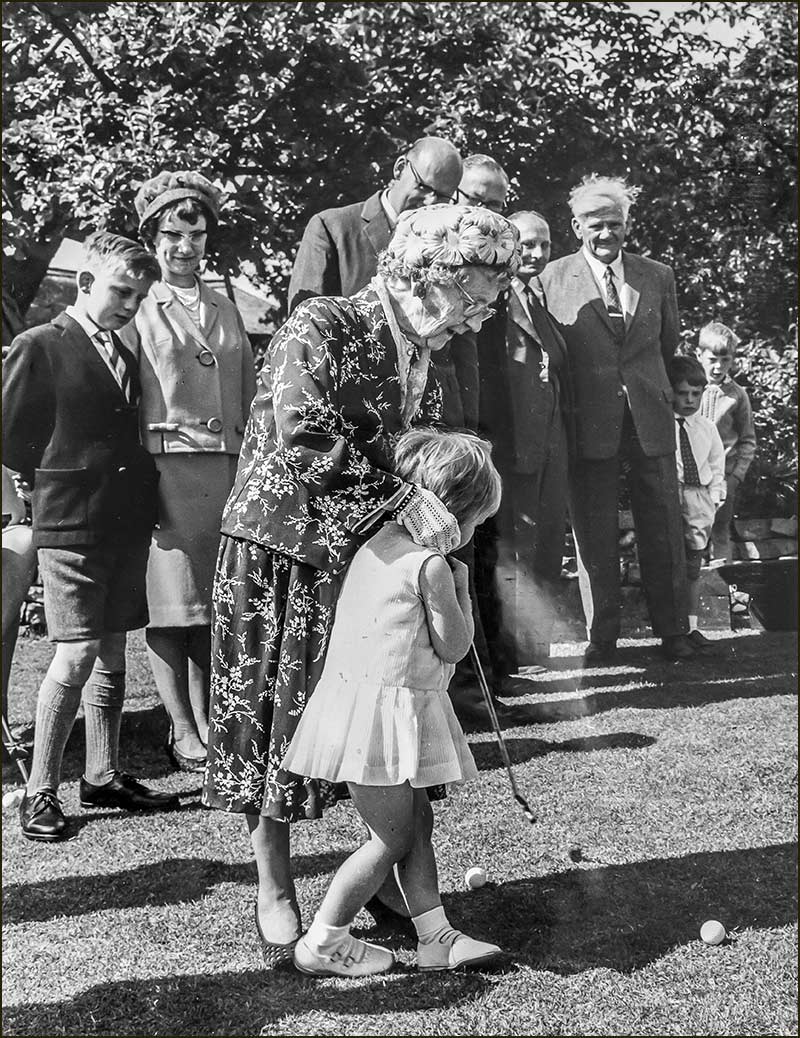
As for David Leavis Salvin and Edith, the most important thing was that their child, Gladys, was healthy. A very healthy one it would seem. She certainly inherited her mother’s long-life genes.
Edith Maud lived to be 97 and died in 1972. Her daughter, Gladys May died in 2000 at the age of 96.
Gladys May Salvin married Arthur William Barlow in 1928.
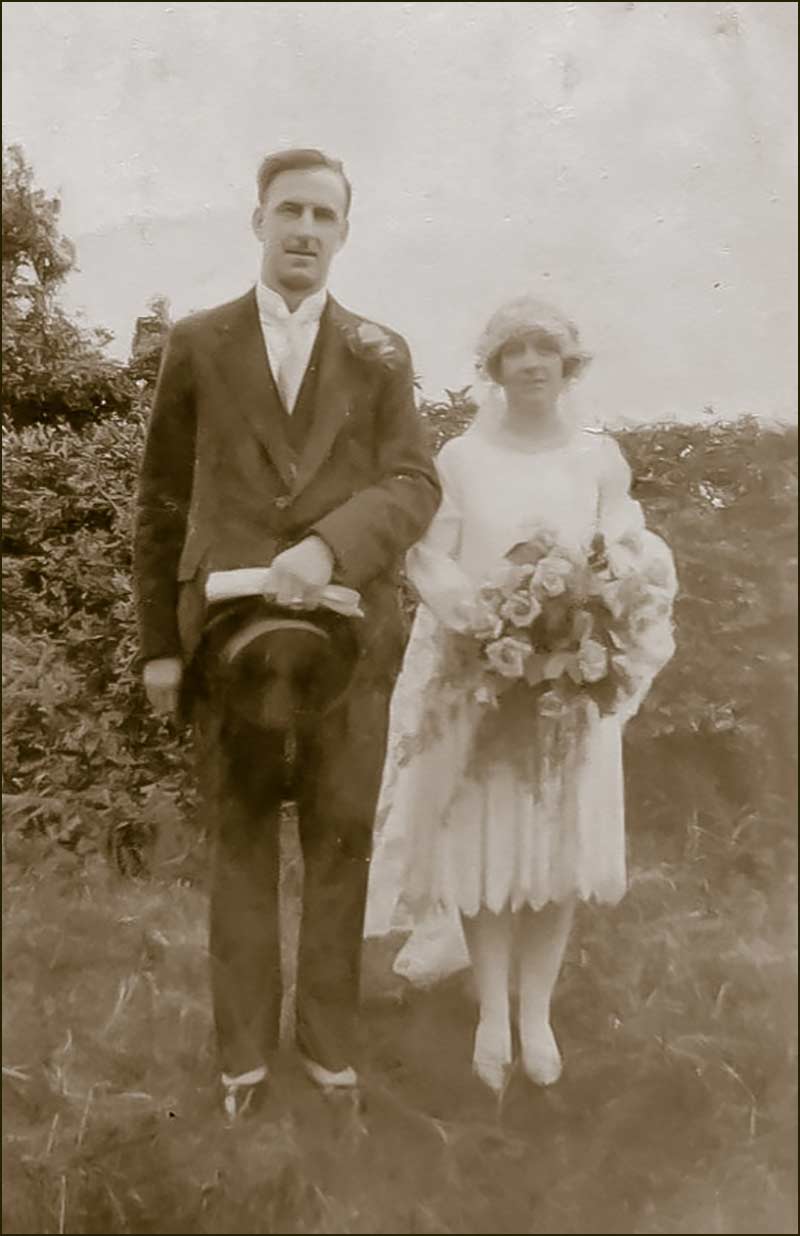
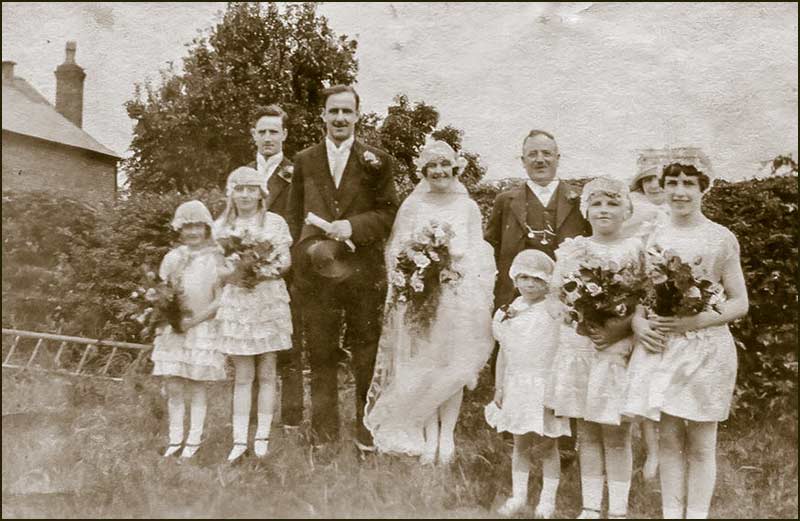
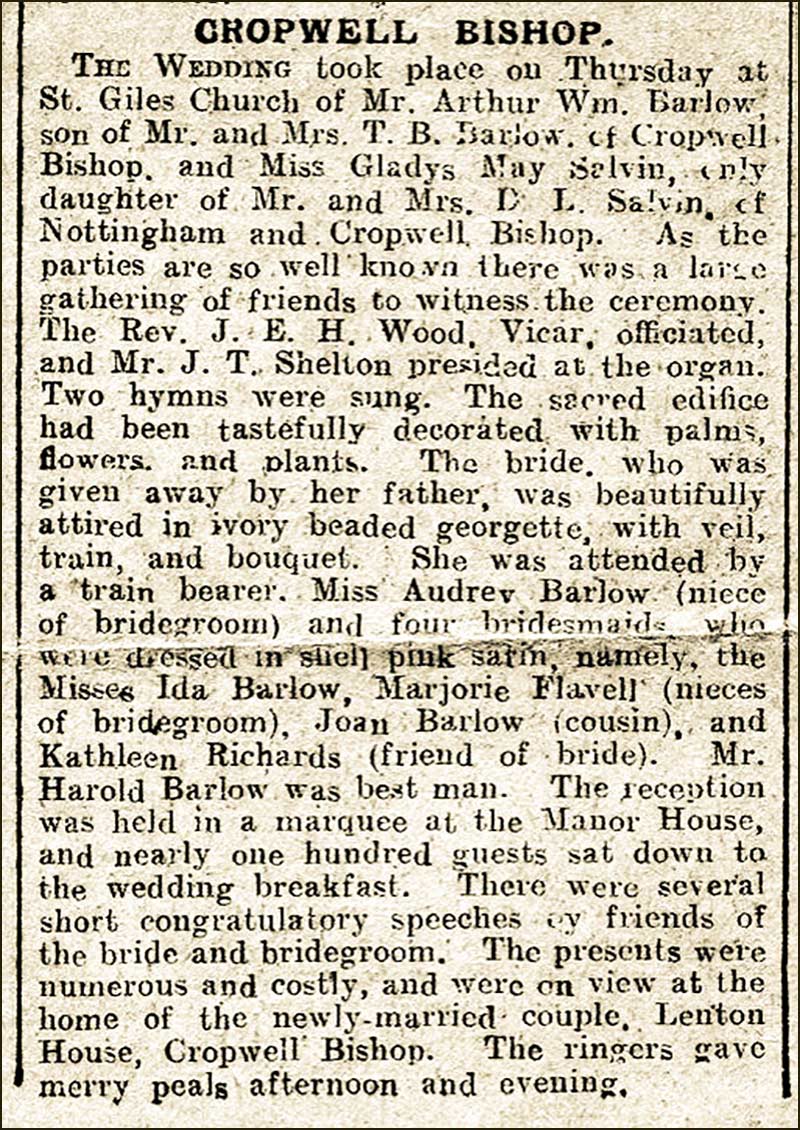
Glady and Arthur had 3 children; David Barlow, John Barlow and Edith Barlow. So, the name of Salvin had disappeared? Not quite.
When you want to keep an earlier surname alive you can either create a double-barrelled surname (e.g. Barlow-Salvin) or keep it as an extra forename. The full names of two of Gladys and Arthur's children were: Thomas David Salvin Barlow and Edith May Salvin Barlow.
So, as you can see, the Salvin family has history in Cropwell Bishop: that is why we have a street named after it.
Tony Jarrow
Note:
Thanks to Anne Terzza, Pam Barlow, Malcolm Dabell and Jane Jones for their help with this article.

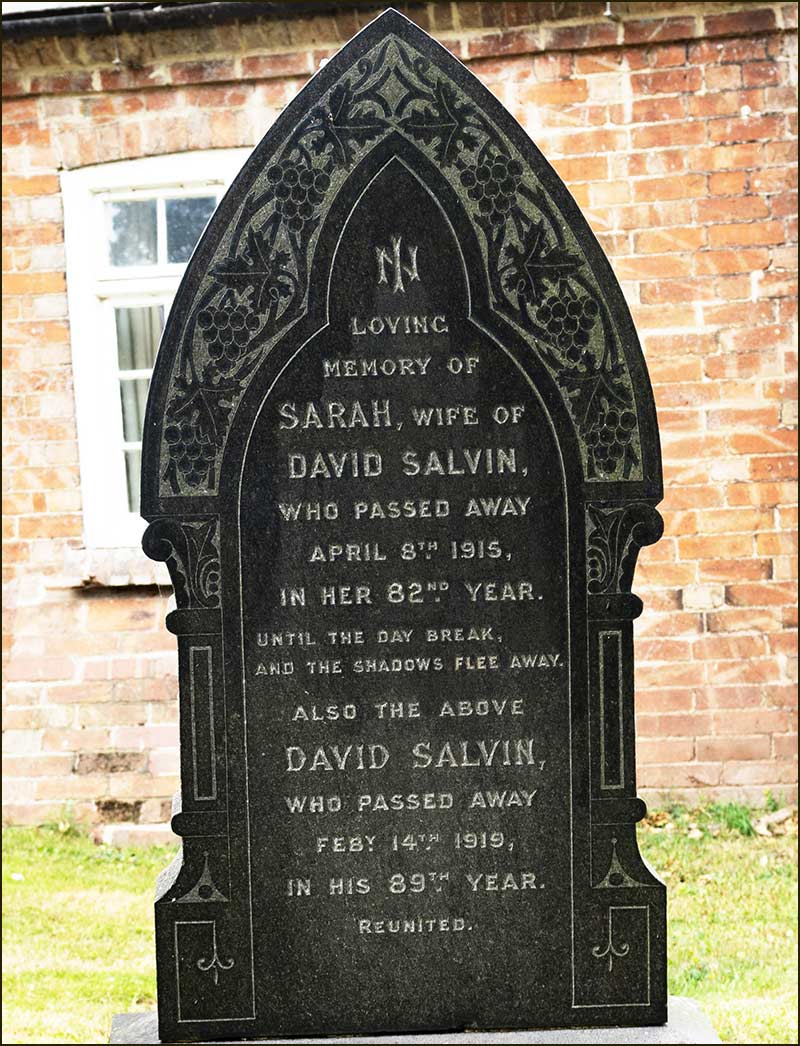
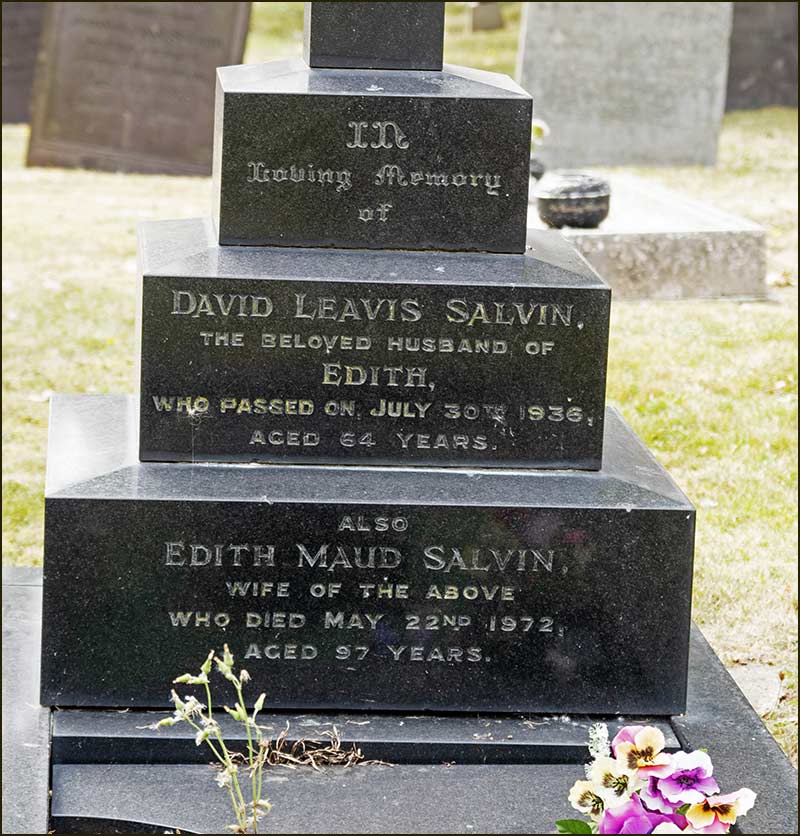
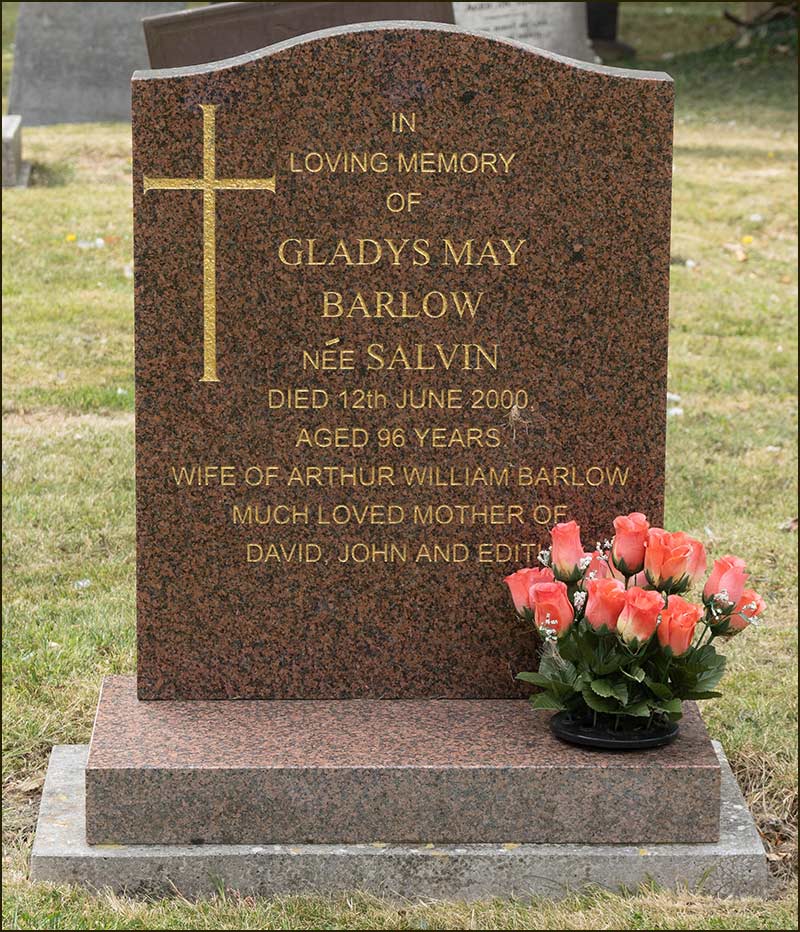
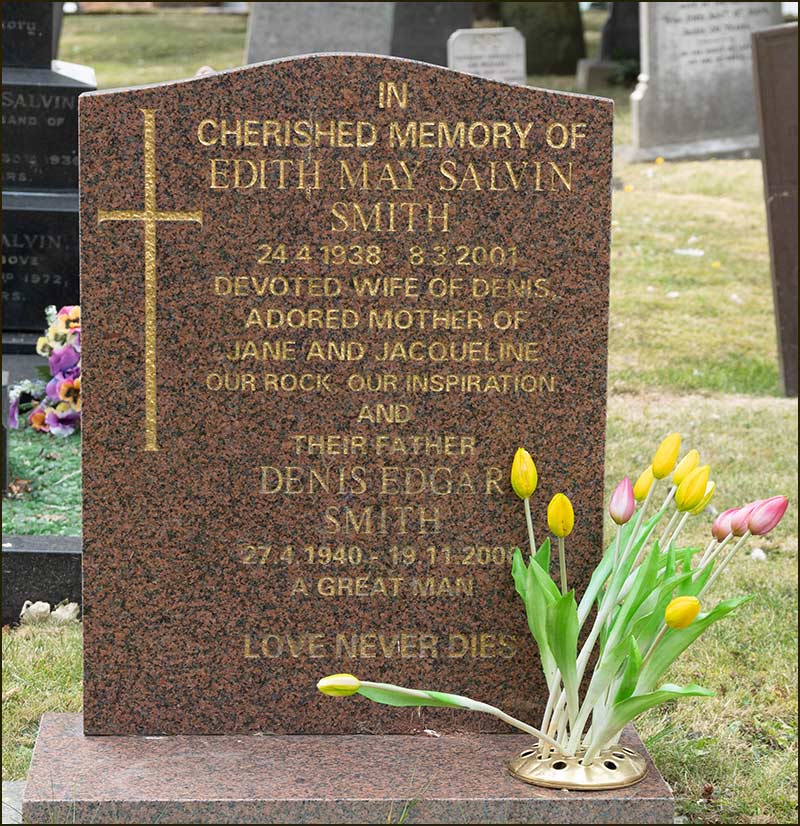

This is Salvin Close now (August 2020).
